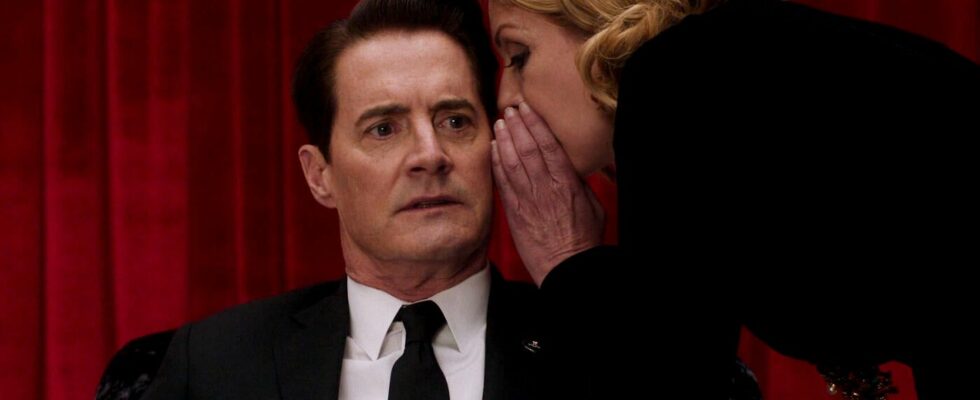In 2020, the Moviepilot editorial team chose the best series of the 2010s. Twin Peaks: The Return landed at number 1. On the occasion of David Lynch’s death, we are remembering the masterpiece by republishing the article that justified its placement.
When we talk about reboots and sequels, it is often with a derogatory undertone and a cinematic franchise on our lips. In the past decade, however, the US series business has also been keen on warming up well-known brands, from Lethal Weapon to Roseanne, Arrested Development to Veronica Mars. Now, of all things, it has a revival at number 1 in our ranking List of the best series of the last 10 years done.
After 25 years, David Lynch and Mark Frost take us back to the woodsy town where evil is rampant in Twin Peaks: The Return. The return in 18 episodes from 2017 combines various trends in the series business of the 2010s.
Intentionally and unintentionally, the season not only consolidates the creative changes in the industry, but also the changes in our viewer behavior. Twin Peaks: The Return united 10 years of TV history full of horror and humor.
Twin Peaks: The Return as a revival series
After its premiere in 1990, the mystery series Twin Peaks developed into… phenomenon and, alongside series such as Homicide, The X-Files – The Sinister Cases of the FBI and Buffy – The Vampire Slayer, it became an example of the rarely explored possibilities that television offered as a storytelling medium. However, Season 2 was controversial, as was Twin Peaks: The Movie. The question of the missing or inadequate conclusion, which gives rise to many revivals, was also at issue with Twin Peaks.
25 years later, the pay-TV channel Showtime (Homeland, Billions) offered Lynch and Frost the opportunity to give Twin Peaks the ending they wanted. The return was for Agent Cooper (Kyle MacLachlan), whose cherry pie romance had gained new popularity in the GIF age. Now Cooper had to cross dimensions and bodies to find his way to Twin Peaks, where he had investigated the 1989 murder of Laura Palmer (Sheryl Lee).
The return also applied to us viewers, who once again wanted to hear the memorable title theme by Lynch and Angelo Badalamenti, who wanted to immerse ourselves in the eerie forests and see life after the death of Laura Palmer.
Twin Peaks: The Return as an author series
Anyone hoping for a recognition effect and a few simple answers was disappointed by Twin Peaks: The Return. The series wasn’t limited to Twin Peaks or the well-known characters, it jumped from location to location, through the decades and dimensions and all of this with remarkable consistency and trust in the flexible viewing habits of their viewers.
It was a one-off project where Lynch was basically a carte blanche received and was able to implement his series without the broadcaster having a greater say. But even in a decade in which more film directors directed entire seasons (The Knick, The Girlfriend Experience, and many more), it fell Radicality with which Lynch applied his style to the medium.
The 8th episode, which was mostly shot in black and white with a few dialogues, conveyed something like this cosmic path of evil in the world using surreal motifs. It was everyone’s responsibility to create their own meaning. However, Lynch’s stylistic devices, which came from the avant-garde, were incorporated into the form throughout the entire season.
Twin Peaks: The Return as a series
Essentially, David Lynch applied an anything-goes mentality trained in cinema to television. However, it came out not a “long film”, but a serieswho often evaded common narrative modes in her medium with admirable self-confidence. In the end she found her way to the end credits, to the excellently booked Bang Bang Bar and its hard-working cleaners, who sometimes swept the floor in two-minute shots.
The broom scene was also torn apart by fans. They were looking Cross-reference and carpentered new meaning in articles and threads where Lynch seemed to give components that were delivered without instructions, Allen keys and without half of the battens. Twin Peaks: The Return could be viewed and examined like a mystery box. But you didn’t have to.
The scripts written by Lynch and Frost mixed a season-long Agent Cooper arc in a gruesomely satisfying way with actually episodic moments that didn’t matter later.
Twin Peaks in the series boom
Which all sounds nice and good and valuable and a bit dull. Twin Peaks: The Return was and is great fun. Although the series repeatedly delves into deeply sad (everyday) realms, even though it tattoos Laura Palmer’s fate on your eardrums, the absurdity organically develops into internet-friendly humor.
The married couple Andy (Harry Goaz) and Lucy (Kimmy Robertson) not only gave us many puzzled looks from Sheriff Truman (Robert Forster), but also Wally Brando (Michael Cera).
Born on the same day as Marlon and equipped with his leather jacket from The Wilde, Wally is a gag on two legs that rises to astonishing pathos. Although the series at Showtime in the ratings niche remained, Twin Peaks: The Return gave birth to fireworks of joy about the Wallys, Dougies and Co.
The so-called Peak TV, the quantitative peak of series production in the USA, made experiments like Twin Peaks: The Return possible. The next ten years will have to show whether we are actually dealing with solid rock in the industry or a bubble. For one experimental, touching and hilarious series like Twin Peaks: The Return, we should be grateful.
Twin Peaks: The Return is currently streaming on Paramount+ and the usual purchase and rental providers.
